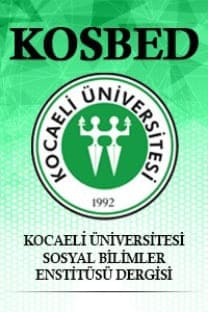Üretim Malları İthalatı Fiyat ve Gelir Esneklikleri Tahmini: Türkiye Örneği
Bu çalışma Türkiye’nin 1982–2004 döneminde üretimi ve ihracatında önemi gittikçe artan yatırım ve ara malları ithalatını açıklamak ve sanayileşmiş ülke fiyatlatlarına göre deflate edilmiş yatırım, ara malı ve toplam üretim malları ithalatının gelir, nispi fiyat ve fiyat ilişkili diğer değişkenlerin esneklik katsayılarını tahmin etmek amacıyla ele alınmıştır. Modeller sonucunda yatırım ve ara malları ithalatını açıklamada gelirin, nispi ithalat fiyatının, döviz kuru, dış ticaret hadleri ve ihracatın etkili olduğu sonucuna ulaşılmıştır. Teorik nedenselliklere bağımlı olarak kurulan ve tahmin edilen modeller ülkenin nispi ithalat fiyatı ve dış ticaret hadleri ve reel döviz kuru azaldığında, gelir, ihracattan arındırılmış gelir ve ihracat arttığında üretim malları ithalatının arttığını işaret etmiştir. İhracatın sürekliliğinde önem arz eden bu malların ithalat gelir esnekliğinin ihracatın ihracattan arındırılmış gelir ilaveiyle arttığı sonucuna ulaşılmıştır
Anahtar Kelimeler:
Yatırım ve ara malları, ithalat modelleri, esneklik katsayıları tahmini, Türkiye
Estimating Production Goods Imports’ Price And Income Elasticities: The Case Of Turkey
This study attempts to explain the capital and intermediate goods import demand of Turkey, which have been played important roles in the production and export of Turkey, and estimates their income, price and price related other elasticities based on the industrial countries’ prices deflated import, export and income values for the period of 1982-2004. It is found that the income, relative import price, foreign exchange rate and terms of trade and export are found meaningful in explaining the import demand of Turkey for these goods. The estimated models based on the theoretical causalities indicated that the production good import demand increases as a result of decreases in relative import price, domestic terms of trade, real exchange rate and increases in export, income and income excluded export. It is found that the income elasticity of these import goods increases with addition of export to export exluded income, which implies the importance of imported production goods for the sustainability of export in the economy.
___
- Akçay, S. ve Demirhan, E. (2005), “The Causal Relationship between Openness and Economic Growth: Evidence From Selected MENA Countries”, Yapi Kredi Economic Review ( 16) 2: 77-83.
- Aklan, N. A. (1997), “Türkiye’de Yabancı Sermaye Yatırımları”, Dış Ticaret Dergisi, Temmuz Sayısı.
- Alkin, E. (2006), “İhraç
- İkameci Politika”, Tercüman Gazetesi,
- http://www.tercüman.com.tr, Şubat 2.
- Demir, O. ve diğerleri (2005), “Dış Ticaret ve Beşeri Sermayenin Büyümedeki Rolü: Türkiye Örneği”, Kocaeli Üniversitesi Sosyal Bilimler Enstitüsü Dergisi (9): 180-196.
- Dış Ticaret Müsteşarlığı (2007), Başlıca Ekonomik Göstergeler, Dış Ticaret İstatistikleri, www.dtm.gov.tr. [Erişim tarihi: 30.01.2007].
- Edwards, S. (1993), “Openness, Trade Liberalization and Growth in Developing Countries”,Journal of Economic Literature (31) 3: 1358-1393.
- Ersungur, Ş.M. ve Kızıltan, A. (2005), “Türkiye Ekonomisinde İthalata Bağımlılığın Girdi- Çıktı Yöntemiyle Analizi”, 26-27 Mayıs 2005 VII. Ulusal Ekonometri ve İstatistik SempozyumuBildirileri, http://www.ekonometridernegi.org/bildiriler/bildiriler.htm.
- Feenstra, R. C. ve Markusen, J. R. (1994), “Accounting for Growth with New Inputs”, International Economic Review (35) 2: 429-447.
- Funke, M ve Ruhwedel, R. (2001), “Product Variety and Economic Growth: Empirical Evidence for the OECD Countries”, IMF Staff Papers (48) 2: 225-242.
- Grossman, G. M. ve Helpman, E. (1990), “Trade, Knowledge Spillovers, and Growth”, European Economic Review ( 35) 2-3: 517-526.
- Guisan, M.C. (2005), “Human Capital, Population Growth and Industrial Development in Mexico and Turkey: A Comparative Analysis with Other OECD Countries 1964-2004”, Paper Series Economic Development No. 85, http://ideas.repec.org/s/eaa/ecodev.html.
- Guisan, M.C. ve Exposito, P. (2004), “The Impact of Industry and Foreign Trade on Economic Growth in China. An Inter-Sector Econometric Model, 1976-2002”, Working Paper Series Economic Development. No. 76: Faculty of Economics. Santiago de Compostela in Collaboration with Euro-American Association of Economic Development Studies, Spain.
- Gürak, H. (2006), Ekonomik Büyüme ve Küresel Ekonomi, Bursa: Ekin Yayınevi.
- Hatemi-J, A. ve Irandoust, M. (2001), “Productivity Performance and Export Performance: A Time-Series Perspective”, Eastern Economic Journal (27) 2: 149-164.
- Kösekahyaoglu, L. ve Şentürk, C. (2006), “İhracata Dayalı Büyüme Hipotezini Testi:Türkiye ve Yeni Gelişen EkonomiLer Üzerine Karsılastırmalı Bir İnceleme”, Süleyman Demirel Üniversitesi Sosyal Bilimler Enstitüsü Dergisi (2): 423-45.
- Sarıkaya, Ç. (2004), “Export Dynamics in Turkey”,
- Seyidoğlu, H. (2001), Uluslararası İktisat: Teori, Politika ve Uygulama, Istanbul: Güzem 2): 41–64. Yayınları.
- Tarı, R. ve Kumcu, F. S. (2005), “Türkiye’de İstikrarsız Büyümenin Analizi:1983–2003”, Dönemi. Kocaeli Üniversitesi Sosyal Bilimler Dergisi (9): 156–179.
- Tuncer, İ. (2003), “Teknolojik Bilginin Yayılma Süreci ve Gelişmekte Olan Ülkeler: Türkiye İçin Bir Uygulama: 1950–2000”, Uludağ Üniversitesi İktisadi ve İdari Bilimler Fakültesi ( 21) 2: 1-25.
- Türkiye İstatsitik Kurumu (2005), İstatistik Göstergeler 1923-2004, Ankara: http://www.tuik.gov.tr.
- Weinhold, D. ve Rauch, J. E. (1997), “Openness, Specialization, and Productivity Growth in Less Developed Countries”,NBER Working Paper No. 6131, Cambridge, Massachusetts: National Bureau of Economic Research.
- Yamak, R. ve Korkmaz, A. (2005), “Reel Doviz Kuru ve Dış Ticaret Dengesi Ilişkisi”. İstanbul Üniversitesi Ekonometri ve İstatistik Dergisi (1) 2: 11-29.
- Yıldız, İ. H. (2007), “Büyümenin ve Küresel Rekabetin Anahtarı AR-GE harcamaları”, http://www.akşam.com.tr. [Erişim tarihi: 31.01.2007].
- Yokota, K. (2003), “Productivity Spillovers and Economic Growth: Was East Asia Unique? “Dıscussıon Papers In Economics, Working Paper No. 03-17: Center for Economic Analysis, Department of Economics, University of Colorado at Boulder, Colorado.
- ISSN: 1302-6658
- Başlangıç: 1997
- Yayıncı: Kocaeli Üniversitesi
Sayıdaki Diğer Makaleler
Çevresel Bilgilerin Muhasebesi ve Raporlanması
Turhan Korkmaz, Hasan Uygurtürk
Türkiye’deki Kamu Üniversitelerinde CCR Etkinliği-Ölçek Etkinliği Analizi: DEA Tekniği Uygulaması
Otel İşletmelerinde Stres Yönetimi: İstanbul’ daki Beş Yıldızlı Otel İşletmelerinde Bir Araştırma
Üretim Malları İthalatı Fiyat ve Gelir Esneklikleri Tahmini: Türkiye Örneği
